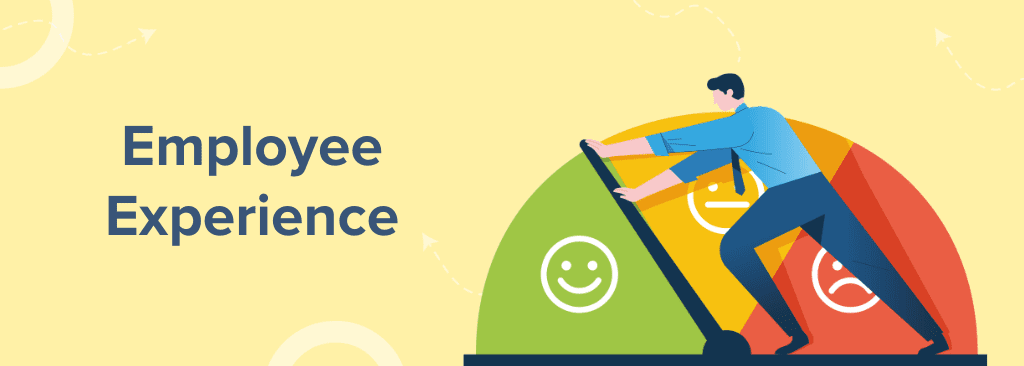Employee Experience – How Important Is It in the Context of Customer Experience?
Jens Ritter, CEO of Lufthansa Airlines, recently went undercover as a flight attendant to gain new insights into the cabin crew job.
Ritter flew from Frankfurt, Germany, to Riyadh, Saudi Arabia, as an additional crew member.
He said the experience was a challenging one and left him amazed at how much there is to organize before each flight. He said, “I was amazed by how much there is to organize, especially if something doesn’t go as planned – for example, the meals offered on the menu cards were not exactly the meals loaded on board.
He added, “I used to fly as a pilot, and so I thought I knew about the challenges a flight during the night entails. But to be present and attentive and charming – when the biological clock tells you to sleep – was something entirely different.”
Ritter said that making decisions in office will be different going forward as he has now experienced what serving on board is like.
This is an example of a CEO getting a first-hand experience of being a customer-facing resource of Lufthansa.
Employee First, Customer Second
Have you heard of this transformation?
This is something that HCL Technologies follows, and this was initiated by their former CEO, Vineet Nayar.
HCL Technologies defied the conventional wisdom when it turned the management structure upside down. By putting employees first and customers second, HCL was able to activate the value zone – the place where frontline employees interact with customers and create real value for them.
By doing so, it fired the imagination of both employees and customers. It set HCL Technologies on a journey of transformation that has made it one of the fastest-growing and profitable global IT services companies.
According to BusinessWeek, HCL Technologies is one of the world’s most influential companies.
- HCL Technologies grew at a CAGR of 24% and increased its market capitalization by 186% in the last three years.
- Doubled the number of $10 Mn, $20 Mn, and $50 Mn customers and tripled the number of $100 Mn customers.
- HCL Technologies’ revenue per employee is amongst the highest in the Indian IT industry today.
Putting your employees first really works for organizations. The small catalysts that HCL Technologies took might differ from those that would work for other organizations, but it certainly works.
Positive employee experiences fuel better customer experiences in the long run, and also ensure the growth of your business.
How Does Employee Experience Fuel Customer Experiences?
Let me give you five examples.
1. Zappos
Zappos, an online shoe and clothing retailer, is known for its outstanding customer service.
Zappos empowers its employees to go above and beyond in helping customers. Zappos invests in employee training, ensures a supportive workplace culture, and encourages staff to use their judgment to solve customer problems.
This employee-centric approach has led to high job satisfaction, and consequently, customers receive top-notch service, including surprise upgrades and personalized assistance.
2. Southwest Airlines
Southwest Airlines consistently ranks high in customer satisfaction.
Southwest prioritizes employee experience, offering competitive wages, opportunities for advancement, and a positive company culture.
Employees often express their enthusiasm, and this positive energy translates into exceptional customer service.
Passengers appreciate the friendly and accommodating staff, leading to loyal customers who choose Southwest repeatedly.
3. Four Seasons Hotels
The Four Seasons is renowned for its luxury hotel experiences.
Four Seasons invests heavily in employee training, empowerment, and teaching staff about the art of customer service.
Employees are well-equipped to handle even the most demanding guest requests.
The commitment to employee development directly impacts the customer experience, with guests receiving unparalleled service and a desire to return.
4. Salesforce
Salesforce, a leading CRM company, values its employees’ well-being.
They offer wellness programs, flexible work arrangements, and ongoing professional development.
Employees who are happy and healthy tend to be more engaged, and the engagement is mirrored in their interactions with customers, contributing to high levels of customer satisfaction and loyalty.
5. Starbucks
Starbucks offers comprehensive benefits packages to its employees, even part-time workers.
The company also encourages employees to share their ideas for improvement through programs like “My Starbucks Idea.”
This commitment to employee well-being and involvement leads to a motivated and engaged workforce that takes pride in their work.
Customers benefit from this by experiencing friendly and efficient service, resulting in a solid customer base.
Each of these examples cited here states that employee experience is deeply intertwined with customer experience. Companies that prioritize their employees’ well-being, provide training and empowerment, and foster a positive workplace culture often see a direct positive impact on the satisfaction and loyalty of their customers.
The importance of employee experience fueling customer experience is a crucial driver for long-term business success.
